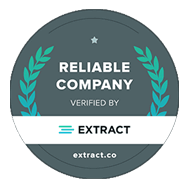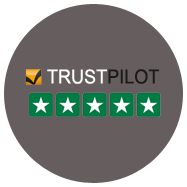A content management system or CMS is software that helps users to create, update, manage and modify the content without the need for technical knowledge of development.
The goal of a CMS is to provide the user interface for building and modifying webpage content. In the earlier days, an average user or a small company had to rely on the static web sites because they could not afford a content management system which would cost a lot of amounts to build the web sites and manage the pages also.
Top Content Management System
1. 
WordPress is one of the popular CMS to build the website and manage the content of the web pages. This platform was launched in 2003 and now become of a major part of the website development. The WordPress community is very large and the best choice for the management and flow of data in web pages.
Benefits of WordPress
- In WordPress so many Plugins are available which make development sites easier
- WordPress contains the in-build SEO for the optimization
- WordPress is completely free to install on your server and reduce the overall development cost of the project
Downside of WordPress
- Sites are prone to hacks. Malware can be installed on your site so you need to constantly monitor your website and install the security plugins
- Before the development of the actual website the planning is needed of the overall project and it takes some time
2. 
Joomla is one of the most powerful CMS on this planet. It is used to develop a website from simple to complex business application. Joomla is reliable, robust, flexible and ease of use for the website development.
Benefits of Joomla
- Support multilingual
- Support custom post types
- Installation and development is easy
Downside of Joomla
- Slightly complex as compare to WordPress
- Compatible problems when you simultaneously installed several modules and plugins
3. 
Benefits of Drupal
- Graphics management
- Thousands of plugins and wide support are available
- Variety of content types
Downside of Drupal
- Installation and modification require advanced knowledge
- High system requirements
4. 
Typo3 is free and very powerful and expand CMS with huge possibility. The main advantage of this CMS is modularity and diversity. The script has an internal language called TypoScript that allows for the creation of many elements like static and dynamic content in it.
Benefits of Typo3
- Page structure can be change and ability to update the page structure without pre-fixed order of blocks, section or articles
- Modularity, Extensions that can be quickly installed
- Community support
Downside of Typo3
- It requires server resources and efficiency
- Installation and modification requires high skill set and experience
5. 
Squarespace is another popular CMS platform and it is an integrated website builder, blogging platform and hosting service. Squarespace’s latest version 7 introduces some new features like cover page builder and Getty images.
Benefits of Squarespace
- Squarespace offers more than 100 sophisticated themes that are optimized for phones and tablets
- Live support when you stuck in the development phase
- Blogging feature
Downside of Squarespace
- Not a large selection of templates
- There is no free plan at Squarespace
6. 
Magnolia CMS is an enterprise content management solution designed to provide users with tools and features for demanding multi-channel, multi-language. With Magnolia, you can work faster and smarter and use data analytics.
Benefits of Magnolia
- Support and User Satisfaction
- Availability to implement functionalities like Mail, Feeds, Commenting and many more
- Digital asset management
Downside of Magnolia
- Installation and Maintenances requires the experience
- Not easy to use
7. 
Serendipity CMS is a free and developed in PHP created mainly for content publishing. When it comes to functionalities, you can extend the plugins, themes. Serendipity has built-in dynamic caching settings.
Benefits of Serendipity
- Provide large selection of themes and plugins
- Good for performance-oriented websites
- Secure, reliable and
Downside of Serendipity
- High system requirements
- Slightly complex
8. 
Dotclear is a French open-source CMS and blogging platform available in English. Developers can create multiple blogs with one installation. Anyone with little technical knowledge can publish on the web using Dotclear.
Benefits of Dotclear
- Simple to use and set up
- Easy publication and user friendly administration
- Low requirements(PHP4/MYSQL4) help to minimize dependencies
Downside of Dotclear
- Single-site only
- Not suitable for large enterprise projects
Conclusion
Choosing the best CMS is fully dependent on your project requirements and the overall the project costing. Personally, we are partial to WordPress CMS due to its ease of use and the overall functionalities with the availability of plugins.










